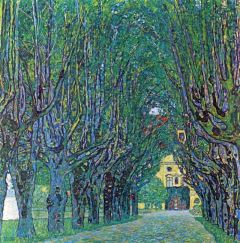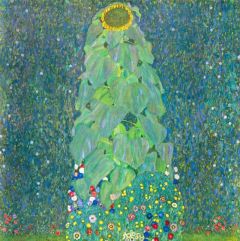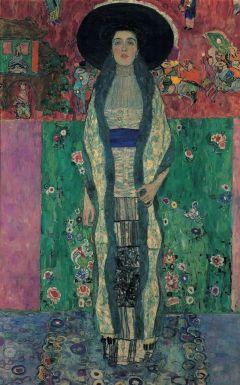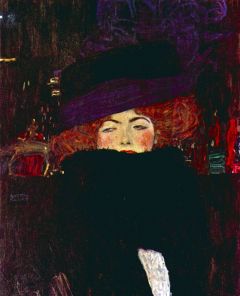Your Painter and copyist can reproduce any work of art to perfection and oil painting.
In 1912, the Austrian artist Gustav Klimt painted the portrait of a 9-year-old girl, the portrait of Mäda Primavesi.
Born in 1903, she was the daughter of Eugenie and Otto Primavesi, the latter being both a banker and a glass producer from Olmütz, in what is now known as the Czech Republic.
His parents were known for hosting decadent salon meetings around the art world in their country home, and supported the community of artists and architects called the Wiener Werkstätte. He was therefore close to Klimt and his ilk.
Otto commissioned Gustav Klimt to create this portrait of more than 2 meters, a portrait that will go down in history as Klimt's only major work that features a child.
The Portrait Story of Mäda Primavesi
In preparation for it, Klimt created a study set featuring Mäda perched on an extended gold chair. The pose he chose shows the young girl looking the artist straight in the eye, her legs apart, but planted firm, and her arms behind her back as a sign of defiance. She appears as Klimt's adult subjects – she demonstrates her self-confidence.
"Mäda Primavesi was, in her own right, an independent and confident young girl, qualities perfectly captured in portraiture." ( Metropolitan Museum )
She stands out from other portraits by her age and her brazen gaze.
For me the portrait is unparalleled among Klimt's works, she was barely 9 years old; She stands upright, meeting the viewer's gaze without shyness. Firmly anchored on its legs, a bit like the Eiffel Tower. Although his gaze is unwavering, his hands – which play a major role in Klimt's portraits – remain hidden behind his body.— Tobias G. Natter
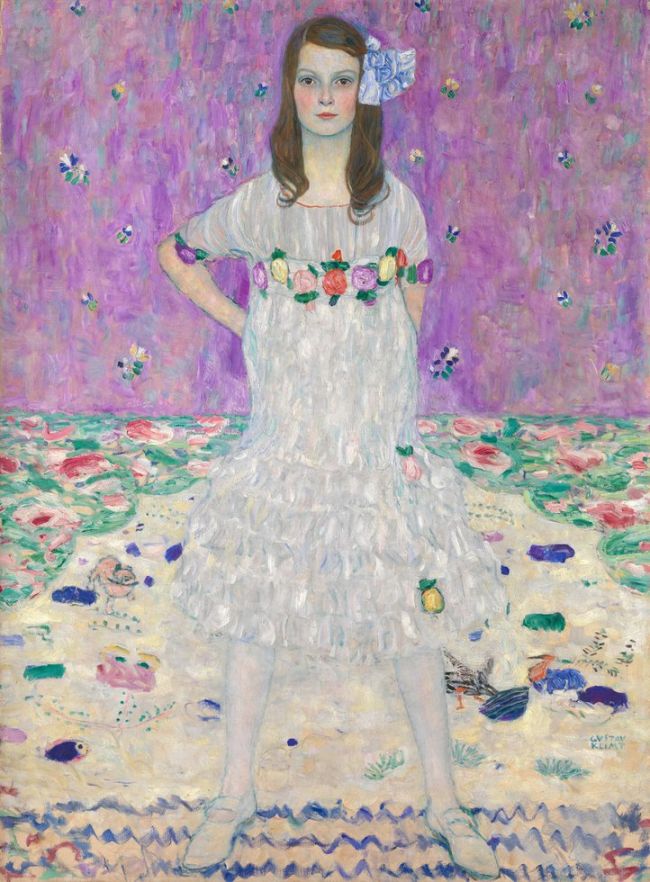
Klimt, The Portrait of Mäda Primavesi
In an interview with the New York Times in 1987, Mäda – or rather Gertrude as she was then called – recalled the time spent with the great master, known for his gold-leaf works, as " The kiss ». She explains how her family used to travel to Vienna, Austria, every few months, for periods of about 10 days. Between all her sessions with Klimt, she estimates that he must have bitten her more than 200 times.
Mäda describes Klimt as a terribly calm person, a man absolutely tolerant of his impatient youth. "I asked him if he could write something about my book," she says, referring to an autograph book she kept when she was younger. "In it he wrote: Day is like night unless I see you. I am happier by dreaming of you. »
The Primavesi family sold the portrait in 1930 and it ended up at the Met (Metropolitan Museum of Art) in 1964. In 1914, Klimt also painted the portrait of his mother Eugenie. This portrait was considered lost during the war until Mäda put it up for sale in 1987. At that time, Mäda – who died in 2000 – was the only living subject of Klimt.
Nowadays, the image of the young Mäda persists. While it's easy to glance absent-mindedly and never wonder who the kid is looking you in the eye, it's heartwarming to know that the cheeky kid with her hands on her hips was as captivating in life as she looks on the web.
In Gustav Klimt's portrait of Mäda Primavesi ,She appears as if she was not going to let herself be bothered by anyone. This can be considered as wealth in itself. However, the painting is even more enjoyable if her pose is seen as a conscious push towards the society of the time that oppressed her simultaneously as a woman and as a child.
Did you like this article? follow my RSS feed so as not to miss a single new article.
- □ Klimt's 10 Most Beautiful Paintings
- □ Biography of Gustav Klimt
- □ Klimt's Paintings: An Exploration of the Masterpieces of Symbolism
- □ Reproduction of Gustav Klimt Paintings - Gustav Klimt Paintings at Paul
- □ Evolution of Gustav Klimt's Style Explained
- □ Klimt's Kiss: 15 Interesting Things You Need to Know
- □ The Story Behind Gustav Klimt's Portrait of Mäda Primavesi
